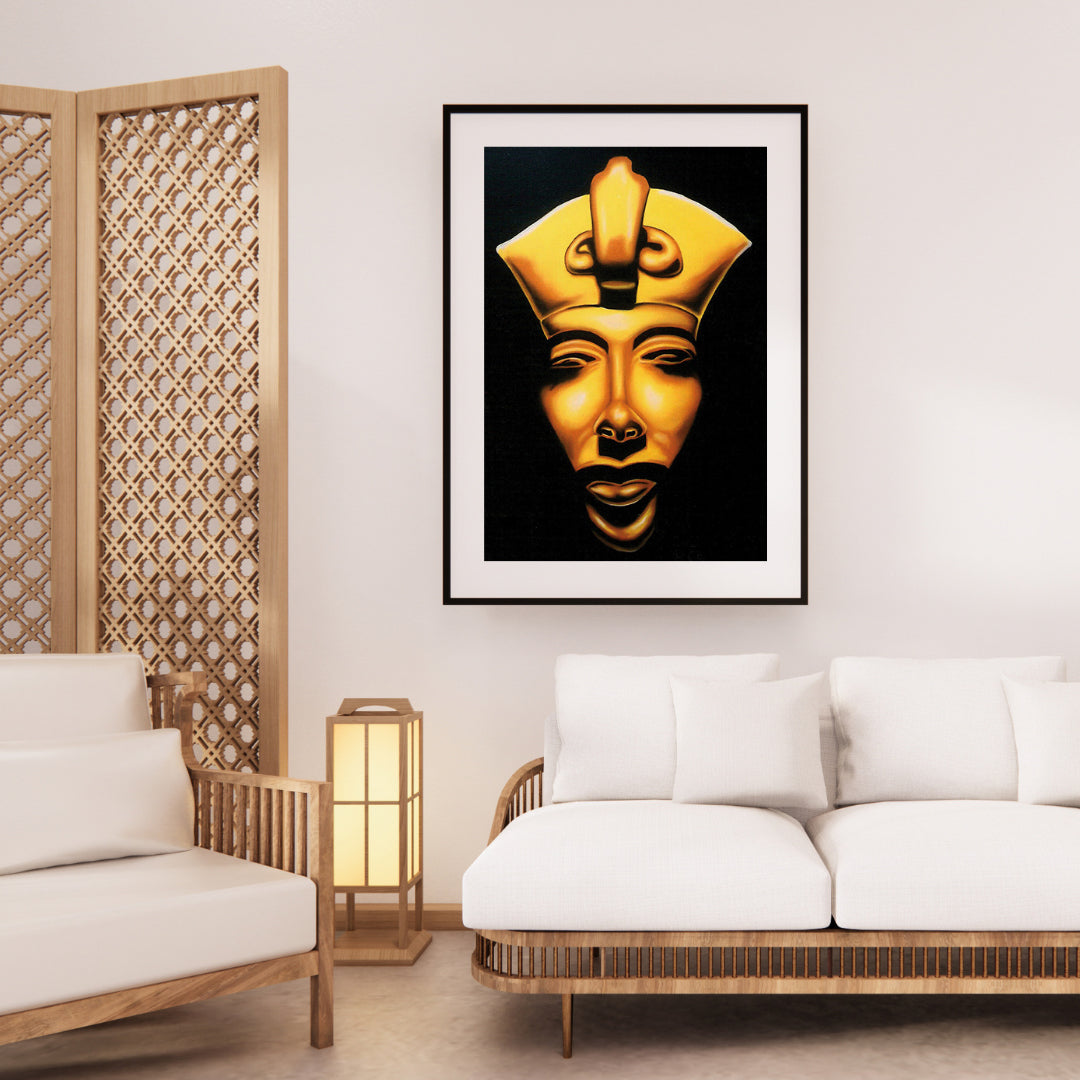Printify
Akhenaten of Kemet — The Aten Reformer (Educational Art Print)
Akhenaten of Kemet — The Aten Reformer (Educational Art Print)
Couldn't load pickup availability
Product Description
Pharaoh Akhenaten (originally Amenhotep IV, 18th Dynasty, ca. 1353–1336 BCE) ignited one of ancient Kemet's boldest experiments—a complete religious, artistic, and political revolution that still reverberates through history.
The Revolutionary Pharaoh
Early in his reign, Akhenaten elevated Aten, the solar disk, above Egypt's traditional pantheon and moved the royal court from Thebes to a brand-new capital: Akhetaten (modern Amarna, "Horizon of the Aten"). This wasn't merely a religious reform—it was a total reimagining of Egyptian society, art, and power structures.
From this purpose-built city in the desert, Akhenaten advanced a devotional focus on Aten and fundamentally reshaped state ritual, art, architecture, and royal ideology. No pharaoh before or after would attempt such a radical break with tradition.
The Amarna Artistic Revolution
The Amarna style broke from millennia of artistic convention with stunning innovations:
- Elongated heads and soft features that emphasized Akhenaten's unique appearance
- Intimate family scenes showing Akhenaten, Queen Nefertiti, and their daughters in tender, human moments—unprecedented for royal portraiture
- Naturalistic poses and curves replacing the rigid formality of traditional Egyptian art
- The sun disk with reaching rays ending in hands, blessing the royal family
- Emphasis on light, movement, and emotion over static perfection
This artistic revolution still inspires debate among scholars: Was it religious expression? Political propaganda? A reflection of Akhenaten's actual appearance? Or all of the above?
Monotheism or Monolatry?
Akhenaten's Aten worship raises fascinating questions:
- Was this true monotheism (one god exists) or monolatry (one god worthy of worship among many)?
- Did this African pharaoh predate Hebrew monotheism by centuries?
- Was it genuine religious conviction or a political move to consolidate power away from the powerful Amun priesthood?
- How did this influence later religious movements in the Mediterranean and Near East?
The Aftermath and Legacy
Akhenaten's revolution didn't survive him. After his death around 1336 BCE:
- The court returned to Thebes under the boy-king Tutankhamun (originally Tutankhaten)
- The Amun priesthood was restored to power
- Akhetaten was abandoned and eventually destroyed
- Later pharaohs tried to erase Akhenaten from history, calling him "the criminal of Amarna"
- His name was struck from king lists
Yet the artistic and theological shockwave of Amarna remains one of Africa's most studied cultural pivots. The Amarna period gave us some of the most beautiful art in Egyptian history, including the iconic bust of Nefertiti and honest, human depictions of royal life never seen before or since.
Why This Print Matters
This striking portrait captures Akhenaten in the distinctive Amarna style—the elongated features, the serene expression, the golden glow of divinity. The dramatic lighting and bold composition demand attention and contemplation.
Display this piece as both art and lesson: a conversation starter about:
- African leadership and innovation in challenging established systems
- Religious revolution and the courage to break with tradition
- How images shape power and political ideology
- The politics of memory—how history remembers or erases leaders
- Ancient Africa's influence on world religious thought
- Artistic freedom vs. convention and what it means to create new visual languages
- Family, humanity, and vulnerability in positions of absolute power
Historical Context for Discussion
Timeline:
- Year 1-4: Rules as Amenhotep IV, begins Aten worship
- Year 5: Changes name to Akhenaten ("Effective for Aten"), founds Akhetaten
- Years 5-17: Full Amarna period—new art, new religion, new capital
- Year 17: Death of Akhenaten; succession uncertain
- Within 20 years: Complete return to traditional religion and erasure of Aten worship
Key Figures:
- Nefertiti: Great Royal Wife, possibly co-regent, vanished from record mysteriously
- Tutankhamun: Son or nephew who restored the old religion
- Ay: Adviser who became pharaoh after Tutankhamun
- Horemheb: General who completed the erasure of Amarna
Product Features
- Material: 180 gsm fine art photo paper
- Finish: Matte paper for sophisticated, glare-free display
- Sizes: Multiple sizes available
- Orientation: Available in both horizontal and vertical formats
- Durability: Scratch and water resistant
- Quality: Rich, luminous colors that capture the golden warmth of the original
- Use: For indoor display only
Perfect For
- Students and educators of ancient history and Egyptology
- Those interested in religious history and monotheism's origins
- Art lovers who appreciate historical and cultural significance
- Home offices, studies, and meditation spaces
- African history collections and gallery walls
- Gift-giving for history enthusiasts and deep thinkers
- Anyone who values revolutionary thinking and bold leadership
Care Instructions
If the print gathers dust, gently wipe with a clean, dry cloth. Keep away from direct sunlight and high humidity to preserve colors and paper quality.
(Frame Not Included)
About the Artist's Vision
This portrait captures Akhenaten emerging from shadow into golden light—much like how modern archaeology has brought him from historical erasure back into the spotlight. The dramatic chiaroscuro emphasizes both his unique features and his transcendent status. He gazes forward with quiet confidence, a leader who dared to reimagine everything and paid the price for his vision. The golden tones evoke both the solar disk he worshipped and the precious artworks that survived to tell his story.





FAQs
Is the print framed?
The print is unframed so you can choose a frame that matches your space.
How long does shipping take?
Our products are made to order and custom printed just for you! Production takes 10–14 days, and once ready, they ship from the USA with tracking provided.
What if I don’t love it?
You’re covered by our 30-Day Money-Back Guarantee. Return it for a full refund—no questions asked.





